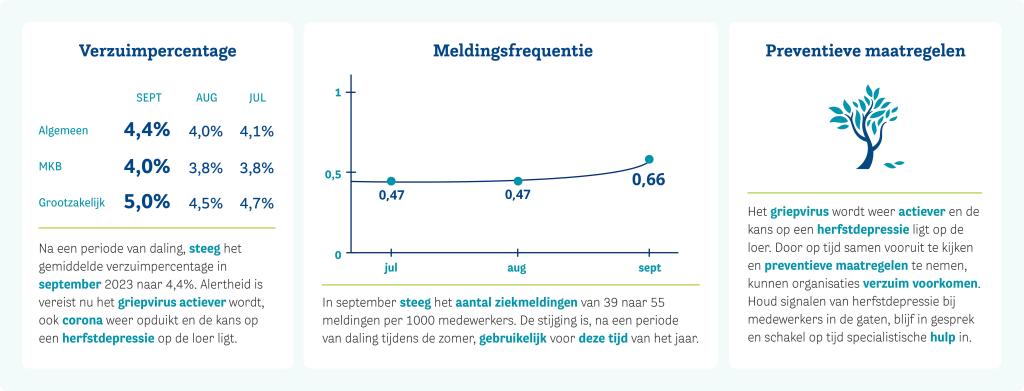Absenteeism in the Netherlands is on the rise again

Increase in absenteeism due to viruses
In September, the number of sick reports increased from 39 to 55 per 1,000 employees. The increase in absenteeism, after a period of decline during the summer, is normal for this time of year. However, this can cause smaller companies in particular major headaches. The number of sick reports has increased in recent weeks, with flu-like symptoms the main cause. ‘We see this type of absenteeism increase every year between September and February, following the holidays,’ Redmer van Wijngaarden, company doctor and director of medical affairs at ArboNed, says. ‘Viruses circulate more in the winter because we spend a lot of time indoors and infect each other more easily. The peak period for flu varies from year to year. Last year, it was in the week between Christmas and New Year, quite early compared to other years. The flu epidemic of 2017 to 2018 was the most severe in recent years, while an evident flu epidemic was notably absent during the Covid-19 pandemic.
More care with hygiene and more working from home
If a lot of employees fall ill at the same time, it has a significant impact on the workplace, especially considering the high level of psychological absenteeism already being felt and the shortage on the labour market. Organizations can prepare right now for a temporary increase in employees who are unable to work for a few days due to the flu. Van Wijngaarden: ‘Remember to take basic hygiene measures, or offer the option to work from home more often if people are suffering symptoms, to the extent the work allows of course. If your team does become understaffed, discuss openly with each other whether there are any tasks that can be postponed. By looking ahead together in good time, you prevent business continuity and the pressure on workers from being further compromised.’
Autumn blues
Almost a quarter of all days of absence are caused by stress-related symptoms. From September to November, ArboNed and HumanCapitalCare receive approximately 30% more sick reports due to psychological symptoms than in the period from April to August. Van Wijngaarden: Some people suffer more symptoms in the autumn, such as depression, extra fatigue, and a lack of desire or energy to do things. These autumn blues, which the medical profession calls seasonal affective disorder (SAD), can be largely prevented. The main cause is a disturbance to the biological clock. Because it gets dark earlier, the body produces melatonin sooner to prepare it for the night, which can make you feel tired. We also get less sunlight or daylight, which means the body produces less serotonin, the substance that creates a feeling of happiness. The extent to which someone suffers and how quickly they recover varies from person to person. For most people, it just causes a drop in energy in the autumn, but you can still do something about it yourself. For example, make sure you get as much daylight and fresh air as possible, stay active, and maintain your daily rhythm. If the symptoms persist, seek help. This can prevent a lot of problems and absenteeism.’